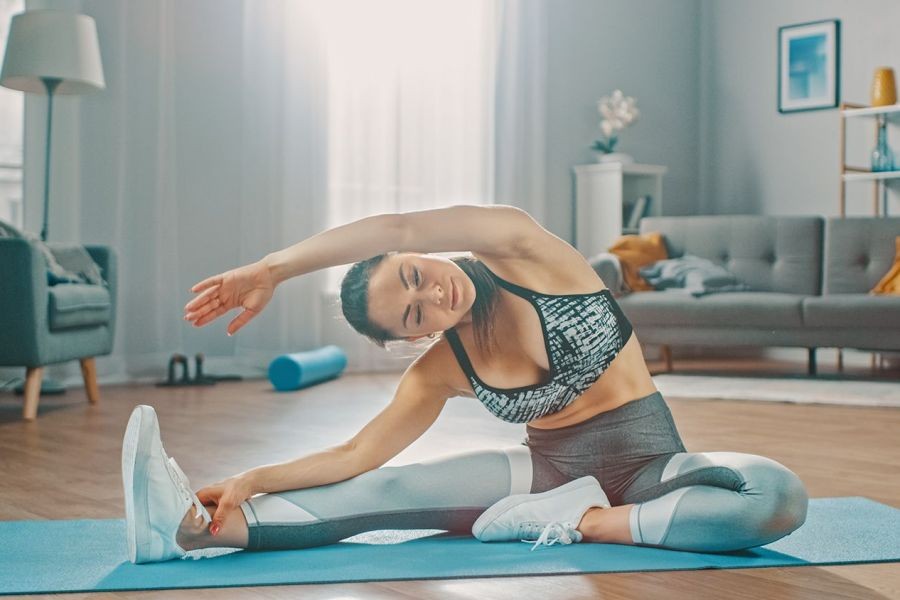Meet Emma, a busy professional in Auckland who, like many, found herself struggling to maintain a fitness routine amidst work commitments and family responsibilities. With gyms closed during lockdowns and work-from-home becoming the norm, Emma needed a solution that was both effective and time-efficient. This scenario is familiar to many New Zealanders as they navigate the challenges of balancing health, work, and lifestyle. The importance of a home workout routine has never been more pronounced.
In New Zealand, where the wellness industry is rapidly growing, with a projected market increase of 7% annually (Source: IBISWorld 2023), understanding how to effectively start a home workout routine is crucial. With the rise of digital fitness platforms and an increasing awareness of health, Kiwis are looking for ways to incorporate exercise into their daily lives without the hassle of commuting to a gym. This article aims to provide data-backed insights and strategies for starting a home workout routine that truly works, tailored to the unique context of New Zealand.
Understanding the New Zealand Fitness Landscape
New Zealanders have shown a growing interest in fitness and well-being, with the Ministry of Health reporting that 60% of adults meet the physical activity guidelines (Source: Ministry of Health NZ, 2023). However, traditional gym membership models are being challenged by the rise of at-home fitness solutions.
With the advent of platforms like Les Mills On Demand, which reported a subscriber increase of 30% during the pandemic, it’s clear that the shift to home fitness is more than a temporary trend. This shift is supported by government initiatives encouraging physical activity as a means to improve public health outcomes.
Case Study: Les Mills On Demand – Revolutionizing Home Workouts in NZ
Problem: Les Mills, a leading New Zealand fitness company, faced declining gym memberships during the COVID-19 lockdowns. With physical locations closed, maintaining member engagement was a significant challenge.
Action: To address this, Les Mills launched "Les Mills On Demand," a digital platform offering a variety of online workouts. This initiative included live classes and an extensive library of workout videos, accessible to members at home.
Result: Within six months, the platform saw a 30% increase in subscriptions, and member engagement rose by 50%. This success highlighted the demand for flexible, home-based fitness solutions.
Takeaway: The case of Les Mills demonstrates the potential of digital fitness platforms in New Zealand. For individuals starting a home workout routine, leveraging such platforms can offer structure and community support, critical elements for success.
Key Strategies for Starting a Successful Home Workout Routine
- Set Clear Goals: Define what you want to achieve, whether it’s weight loss, muscle gain, or improved cardiovascular health. Clear goals will guide your routine and keep you motivated.
- Create a Dedicated Space: Designate a specific area in your home for workouts. This can be as simple as a yoga mat in the living room or a fully equipped home gym in the garage.
- Utilize Technology: Use apps and online platforms for guidance and motivation. Options like FitOn and Nike Training Club offer free workouts and personalized plans.
- Schedule Regular Workouts: Consistency is key. Schedule workouts as you would any other appointment, and aim for at least 150 minutes of moderate exercise per week, as recommended by health guidelines.
Data-Driven Insights: The Economic Impact of Home Workouts in New Zealand
The shift towards home workouts has significant implications for New Zealand’s economy. According to a report by Stats NZ, the fitness industry contributes approximately NZD 294 million annually to the economy. The rise of home workouts could potentially redistribute this economic activity, with more spending on digital fitness services and home gym equipment.
Moreover, the increased demand for fitness technology has spurred innovation and growth in related sectors, such as sports equipment and wearable fitness devices. This trend aligns with global patterns, where the home fitness market is expected to reach USD 23.27 billion by 2027 (Source: Grand View Research).
Pros and Cons of Home Workouts
Pros:
- Flexibility: Home workouts allow you to exercise at your convenience, accommodating busy schedules without the need for travel.
- Cost-Effective: Eliminating gym memberships can result in significant savings. A one-time investment in basic equipment can suffice for many routines.
- Privacy: Exercising at home provides a comfortable and private environment, reducing the intimidation some feel in a gym setting.
- Customization: Tailor workouts to suit personal preferences and fitness levels, incorporating a variety of exercises and equipment.
Cons:
- Limited Equipment: Access to a complete range of gym equipment can be challenging, potentially limiting workout variety.
- Motivation: Staying motivated without the social environment of a gym can be difficult for some individuals.
- Space Constraints: Not everyone has adequate space at home to accommodate a full workout setup.
Debunking Common Myths about Home Workouts
While home workouts offer numerous benefits, several misconceptions can deter individuals from fully embracing them:
Myth: "Home workouts aren’t effective."
Reality: Research indicates that consistent home workouts can yield similar health benefits to gym-based routines, provided they are well-structured and varied (Source: American Council on Exercise).
Myth: "You need expensive equipment."
Reality: Many effective workouts require minimal equipment. Bodyweight exercises, resistance bands, and small weights can offer significant benefits.
Myth: "Home workouts are only for beginners."
Reality: Advanced athletes can also benefit from home workouts by incorporating progressive overload and diverse training modalities.
Future Trends in the NZ Fitness Industry
The future of fitness in New Zealand is set to be shaped by technology and innovation. With the rise of AI-powered fitness apps and virtual reality workouts, accessibility to personalized training experiences will likely increase. Furthermore, as sustainability becomes a priority, there may be a shift towards eco-friendly fitness solutions, such as energy-generating exercise equipment.
According to a forecast by the Reserve Bank of New Zealand, these trends could contribute to a 10% increase in the fitness sector’s contribution to the economy by 2028. This growth presents opportunities for local businesses to innovate and cater to evolving consumer preferences.
Conclusion: Taking the First Step
Starting an effective home workout routine requires planning, commitment, and adaptability. By setting clear goals, utilizing technology, and maintaining consistency, New Zealanders can enjoy the benefits of a healthier lifestyle without the constraints of a traditional gym. The economic implications of this trend are significant, offering opportunities for growth and innovation within the wellness industry.
As Emma discovered, with the right approach and mindset, a home workout routine can be a powerful tool for maintaining physical and mental well-being. What’s your next move towards a healthier lifestyle? Share your thoughts and experiences in the comments below!
Related Search Queries
- Best home workout apps in New Zealand
- How to set up a home gym on a budget
- Benefits of home workouts vs. gym workouts
- Top home workout trends in 2024
- Home workout plans for beginners
People Also Ask
How does a home workout routine benefit New Zealanders?
Home workouts offer flexibility and cost savings, crucial for busy Kiwis. They eliminate travel time and provide a private environment, making fitness accessible to more people.
What are the biggest misconceptions about home workouts?
Many believe home workouts are ineffective or require expensive equipment. However, studies show they can be as effective as gym workouts when properly structured, using minimal equipment.
What upcoming changes in New Zealand could affect home workouts?
By 2026, advancements in fitness technology and policy shifts encouraging digital health solutions could enhance the home workout landscape, making it more accessible and personalized.































NidiaWilhi
7 months ago